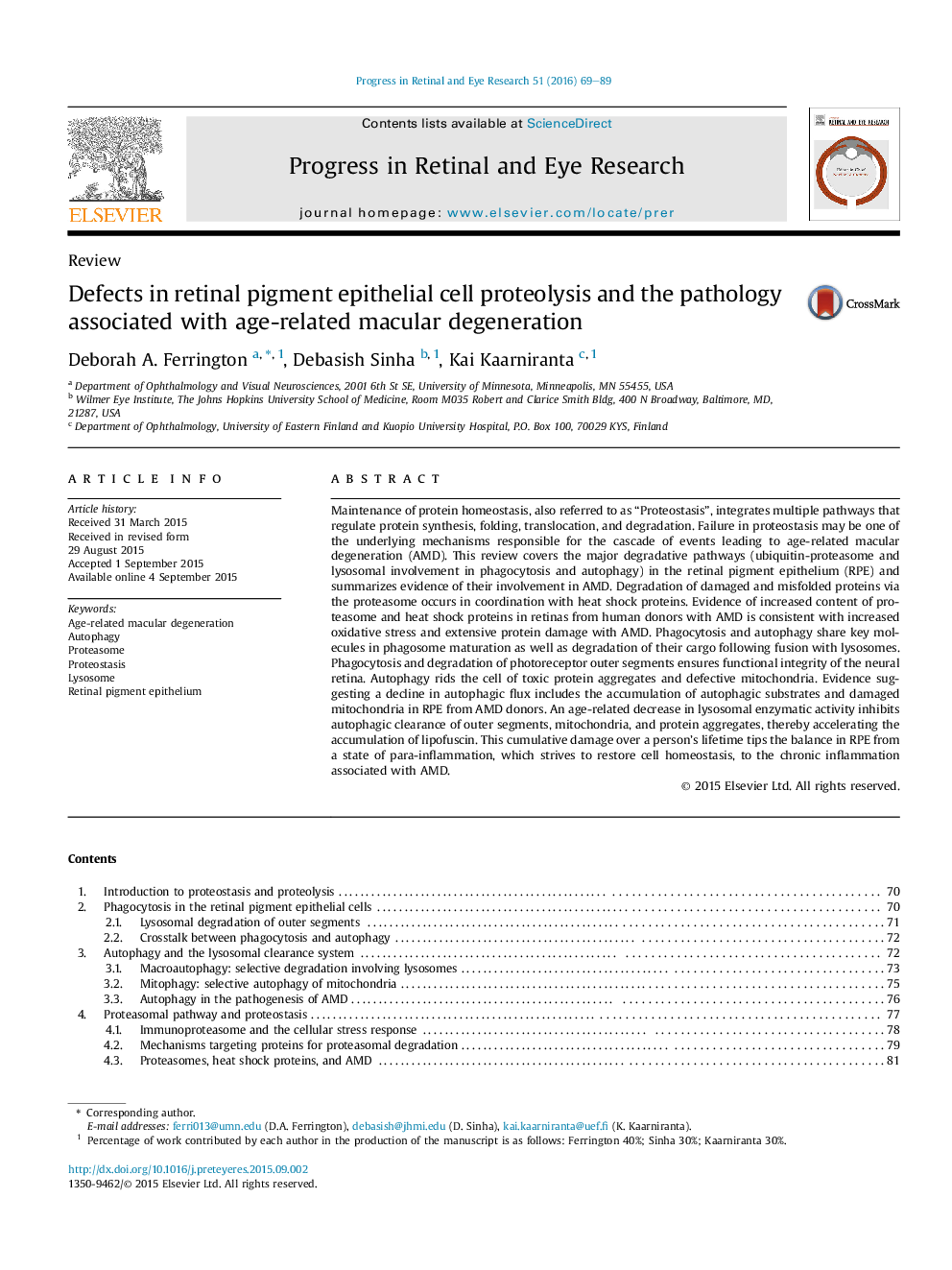| Article ID | Journal | Published Year | Pages | File Type |
|---|---|---|---|---|
| 6202677 | Progress in Retinal and Eye Research | 2016 | 21 Pages |
â¢RPE proteolysis involves the Ub-proteasome and lysosome/autophagy pathways.â¢The proteasome and heat shock proteins are upregulated in AMD donor retinas.â¢Autophagy rids the cell of toxic protein aggregates and defective mitochondria.â¢Lipofuscin accumulates due to an age-related decrease in lysosomal enzymes.â¢Defects in proteolysis facilitates the transition from para-to chronic inflammation.
Maintenance of protein homeostasis, also referred to as “Proteostasis”, integrates multiple pathways that regulate protein synthesis, folding, translocation, and degradation. Failure in proteostasis may be one of the underlying mechanisms responsible for the cascade of events leading to age-related macular degeneration (AMD). This review covers the major degradative pathways (ubiquitin-proteasome and lysosomal involvement in phagocytosis and autophagy) in the retinal pigment epithelium (RPE) and summarizes evidence of their involvement in AMD. Degradation of damaged and misfolded proteins via the proteasome occurs in coordination with heat shock proteins. Evidence of increased content of proteasome and heat shock proteins in retinas from human donors with AMD is consistent with increased oxidative stress and extensive protein damage with AMD. Phagocytosis and autophagy share key molecules in phagosome maturation as well as degradation of their cargo following fusion with lysosomes. Phagocytosis and degradation of photoreceptor outer segments ensures functional integrity of the neural retina. Autophagy rids the cell of toxic protein aggregates and defective mitochondria. Evidence suggesting a decline in autophagic flux includes the accumulation of autophagic substrates and damaged mitochondria in RPE from AMD donors. An age-related decrease in lysosomal enzymatic activity inhibits autophagic clearance of outer segments, mitochondria, and protein aggregates, thereby accelerating the accumulation of lipofuscin. This cumulative damage over a person's lifetime tips the balance in RPE from a state of para-inflammation, which strives to restore cell homeostasis, to the chronic inflammation associated with AMD.
